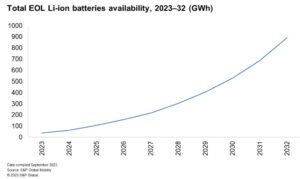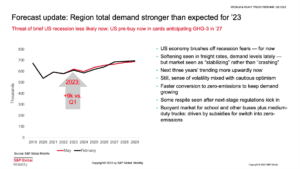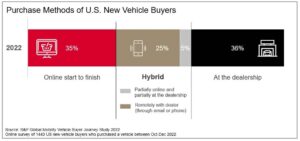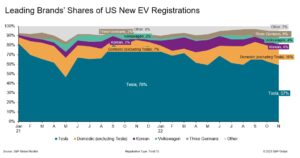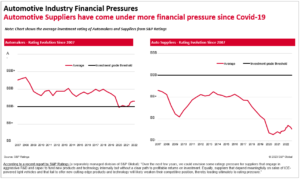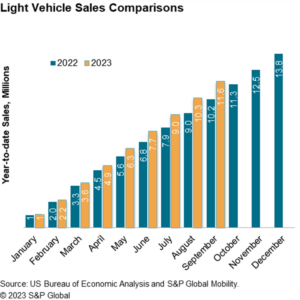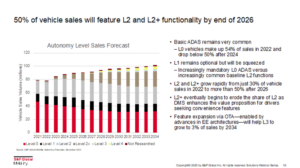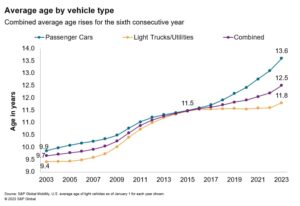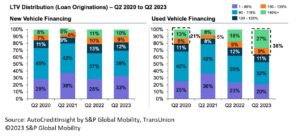
The Indian mobility sector is a true growth engine and is at
the threshold of major change. The industry has effectively changed
gears from “Small is Beautiful” to “The Bigger the Better,” as SUVs
have taken the place of low cost-and-cheerful subcompact
hatchbacks.
The growing economy, higher disposable income, rising
aspirations of the middle class and the rapid pace of
infrastructural developments is accelerating this trend. In 2023,
India may again surpass Japan to become the 3rd largest car market
in the world.
Ambitious policy initiatives and industry support extended by
the current government provides strong impetus for the industry to
excel in the right direction. India is committed toward a final
goal of net zero emissions, and the automotive sector is a key
contributor in leading the task of carbon footprint reduction. From
adopting cleaner fuels, making more efficient vehicles, and
switching to electric vehicles, the Indian automotive industry is
leading the decarbonization journey. The Indian automotive sector
has developed innovative solutions by providing efficient “long
haul” and “last mile” connectivity.
But while the industry is poised to continue this growth trend
in the future, it will be challenged by infrastructure hurdles,
particularly within cities. Urban centers are India’s growth
engines; however, due to the massive influx of cars in cities,
hyperlocal commuting challenges like congestion and pollution are
detrimental to the India Growth story. This will make personal
mobility far more important than individual car ownership, spurring
demand for public transport and new and innovative shared mobility
solutions.
In a heterogenous market like India there will always be
diversity in consumer needs – especially depending on the region of
the country. Consumer adoption and penetration of technologies like
ICE, BEV, hydrogen, flex fuel, biofuel, and natural gas each could
have specific regional presences based on local infrastructure and
grids.
In India, the world’s most populous nation, the mobility of 1.4
billion people will be defined in line with improvements in
infrastructure, investment, innovation, and inclusivity.
Additional detail from this forecast and other industry trends
identified for India by various S&P Global divisions can be
found in our
Look Forward report, published today. The S&P Global
Mobility excerpt can be found
here.
This article was published by S&P Global Mobility and not by S&P Global Ratings, which is a separately managed division of S&P Global.
- SEO Powered Content & PR Distribution. Get Amplified Today.
- PlatoData.Network Vertical Generative Ai. Empower Yourself. Access Here.
- PlatoAiStream. Web3 Intelligence. Knowledge Amplified. Access Here.
- PlatoESG. Automotive / EVs, Carbon, CleanTech, Energy, Environment, Solar, Waste Management. Access Here.
- BlockOffsets. Modernizing Environmental Offset Ownership. Access Here.
- Source: http://www.spglobal.com/mobility/en/research-analysis/massive-growth-potential-constricted-by-snarled-infrastructure.html
- :has
- :is
- :not
- ][p
- 1
- 2023
- 3rd
- a
- accelerating
- Adopting
- Adoption
- again
- always
- and
- ARE
- article
- AS
- At
- automotive
- automotive industry
- based
- BE
- beautiful
- become
- Better
- bigger
- Billion
- by
- CAN
- car
- carbon
- carbon footprint
- cars
- Centers
- challenged
- challenges
- change
- changed
- Cities
- class
- committed
- commuting
- congestion
- Connectivity
- consumer
- consumer adoption
- continue
- contributor
- could
- country
- Current
- decarbonization
- defined
- Demand
- Depending
- detail
- developed
- developments
- differing
- direction
- Diversity
- Division
- due
- each
- economy
- effectively
- efficient
- Electric
- electric vehicles
- Emissions
- Engine
- Engines
- especially
- Ether (ETH)
- Excel
- far
- final
- Footprint
- For
- Forecast
- found
- from
- Fuel
- fuels
- future
- GAS
- gears
- Global
- goal
- Government
- Growing
- Growth
- growth potential
- Have
- higher
- However
- HTTPS
- Hurdles
- hydrogen
- ICE
- identified
- important
- improvements
- in
- Inclusivity
- Income
- india
- Indian
- individual
- industry
- influx
- infrastructural
- Infrastructure
- initiatives
- Innovation
- innovative
- investment
- IT
- Japan
- journey
- jpg
- Key
- largest
- Last
- last mile
- leading
- like
- Line
- local
- Long
- Look
- Low
- major
- make
- Making
- managed
- Market
- massive
- massive influx
- May..
- Middle
- mobility
- more
- more efficient
- most
- nation
- Natural
- Natural Gas
- needs
- net
- New
- of
- on
- Other
- our
- ownership
- Pace
- particularly
- penetration
- People
- personal
- Place
- plato
- Plato Data Intelligence
- PlatoData
- poised
- policy
- Pollution
- potential
- provides
- providing
- public
- published
- rapid
- ratings
- reduction
- region
- regional
- report
- right
- rising
- s
- S&P
- S&P Global
- sector
- shared
- shared mobility
- small
- Solutions
- specific
- Story
- strong
- support
- surpass
- SUVs
- taken
- Task
- Technologies
- than
- The
- The Future
- the world
- There.
- this
- threshold
- to
- today
- toward
- transport
- Trend
- Trends
- true
- urban
- various
- Vehicles
- was
- which
- while
- will
- with
- within
- world
- zephyrnet
- zero

